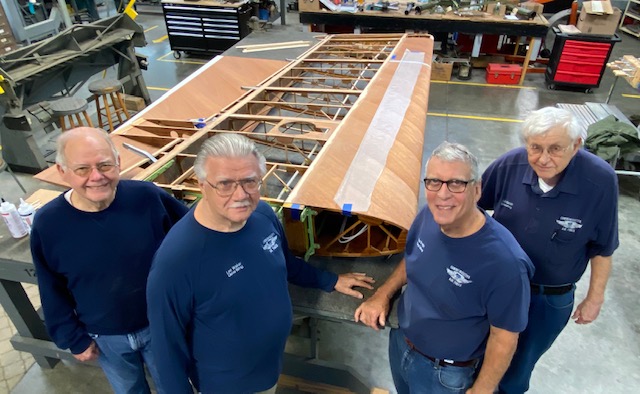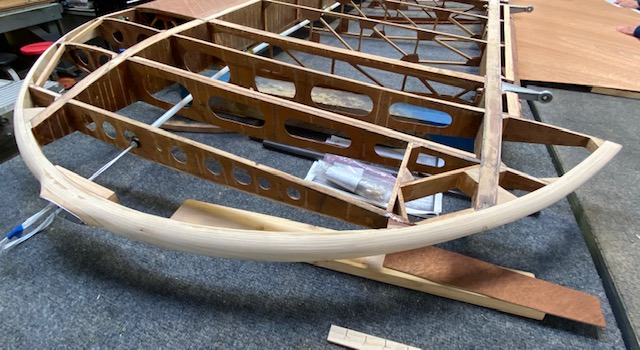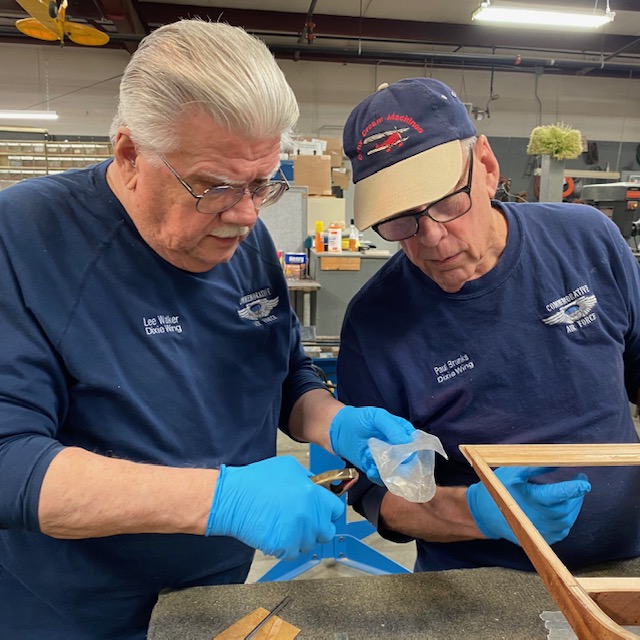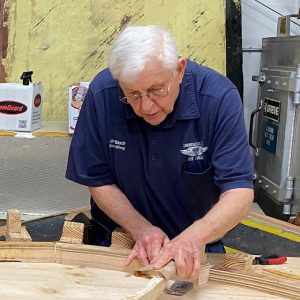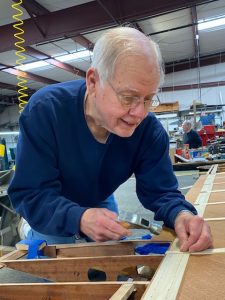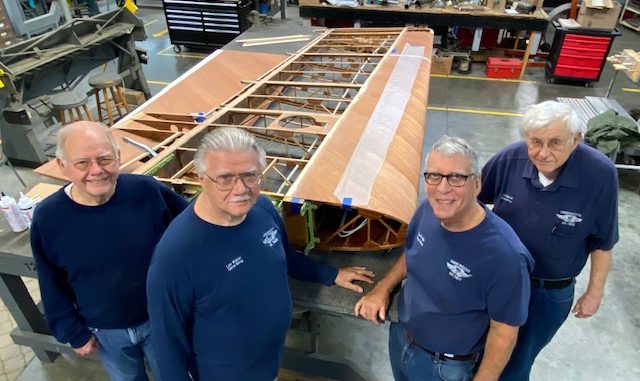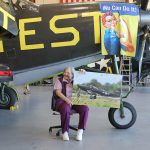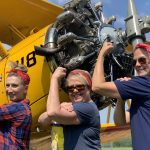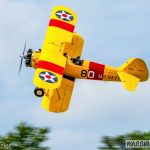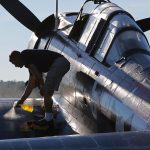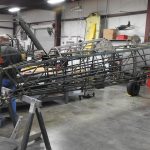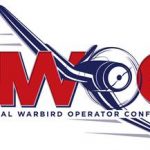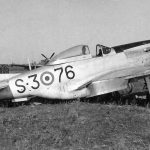In the midst of a primarily metalworking shop at the CAF Dixie Wing, a wooden work of art is taking shape in the form of a PT-19 wing. The restoration project is being conducted by the Georgia based Wing in support of another Commemorative Air Force unit, the CAF Heart of America Wing. This wooden craftsmanship is the work of a crew headed by CAF volunteer Paul Brunks. He relies on the assistance of crew members Forest Buchanan, Lee Walker and John Basch to fabricate the wing parts and surfaces. Earlier in the project, as many as 10 mechanics were involved.
This project being done for the CAF Heart of America Wing in Kansas became much larger than originally expected. The more wing they uncovered, the more work they saw that needed to be done for the wing to be airworthy. The PT-19 has a plywood-stressed skin, with no internal metal supports. Some of the internal wood was rotted, or the glue had lost its bonding ability. A few places appeared to have been chewed by rodents. New ribs are entirely held by glue, applied patiently in keeping with the aircraft’s original design.
“There have been some challenges in forming, and we had to reverse-engineer some of the parts,” Brunks said. “From the start we decided we had to build new ribs, which are now finished. The wing-tip bow was made by hand, laminating and bending and hand-shaving it to the correct shape and size.”
“We didn’t have exact specifications for much of the wing, even though we had a pretty complete set of drawings, because some of it was illegible,” Brunks said. “A guy named Mike Kelly from the Fairchild Type Club in Indiana was instrumental in supporting us with pictures and telling us how things were done. We had to make an entire leading-edge fixture to bend the wood.”
With that fixture, Brunks said it took two hours the make the leading edge, which involved alternate spraying and steaming while they did the bending. The wing surface, which consists of formed sheets of mahogany and poplar plywood, now is partially applied and exhibits the crew’s craftsmanship. Brunks expects to complete the first wing in the next six months, including covering it in fabric and preparing it for painting. The second wing, currently leaning against the shop wall, may go faster, depending on any damage they find underneath the skin.
Brunks has a long aviation career. He started at Texas A&M in Aerospace Engineering, and then went to Embry- Riddle to get his A&P license. He started in general aviation with Beech Aircraft in Wichita, Kan., and spent five years overseas supporting their military contract. He went to McDonald Douglas where he worked on the narrow-body MD-80 in product support and as a field representative. He became a Boeing employee when McDonald Douglas was purchased, where he supported Delta Air Lines for 10 years and went to military support at Andrews AFB. He returned to Atlanta for Delta’s military contracts until his retirement in 2019 after 37 years.
Brunks came to the Dixie Wing after meeting Randy Hawkins at Delta. He joined and said it was a good fit for him, with his background in general aviation. Paul, also a pilot, restored a 1941 Aeronca Chief in Newnan, and built another kit in Minnesota. He became a good choice for the Heart of America wing project, because he had such extensive wood experience.
Lee Walker was a Marine who went to Douglas for a job in overhaul and repair. He joined Delta in 1969 and left in 1976, leaving the aviation industry completely. His path eventually led him to the Dixie Wing, where his first year he was involved with WWII Heritage Days, and he has been an active member for four years.
John Basch (shown right using a sanding block) had a long career with Pepsi-Cola, managing fleet trucks and moving up to Safety Coordinator before he retired in 1990. He saw an article in the Griffin newspaper about the Wing’s Living Aviation History program and the Saturday presentation on the SR-71. He attended, then walked through the hangar, and said, “that was it. I immediately joined up.” He provided general hangar support until the PT-19 project. He joined the crew because he had a long familiarity with woodworking that he got from his father, an accomplished carpenter.
Forest Buchanan (left) worked two summers as a merchant marine seaman while in college. After graduation he worked for a bank until he was accepted to Navy OCS, where he was assigned to an aircraft carrier and made two Gulf of Tonkin cruises. When he was released from active duty, he got an MBA and went back into banking. That led to a job as a Liquidator in Charge with the FDIC, closing failed banks and working out large commercial real estate loans. Working in Houston and Dallas, he attended the Houston Air Show and was hooked on airplanes. He decided if he ever lived near a squadron he would join, and a later transfer to Atlanta brought him to the Dixie Wing. He has been a member since 2005, “learning everything I could about the operation of aircraft, and best of all I got to work on them.” He was on the crew that rebuilt the T-6 and T-34 and now he is helping refurbish the PT 19 wings.
To learn more about thr Commemorative Air Force Dixie Wing, visit www.dixiewing.org







